The 1990s have been an interesting time for Rolex watches. The brand published one of its first entirely new versions in years and discontinued its initial GMT-Master series. Rolex’s attention was shifting back towards refining its heart versions and from your tumultuous Quartz era. This decade produced a few of the brand’s more familiar watches.
Join us as we take a close look at popular 90s Rolex watches.
1990s Rolex Watches
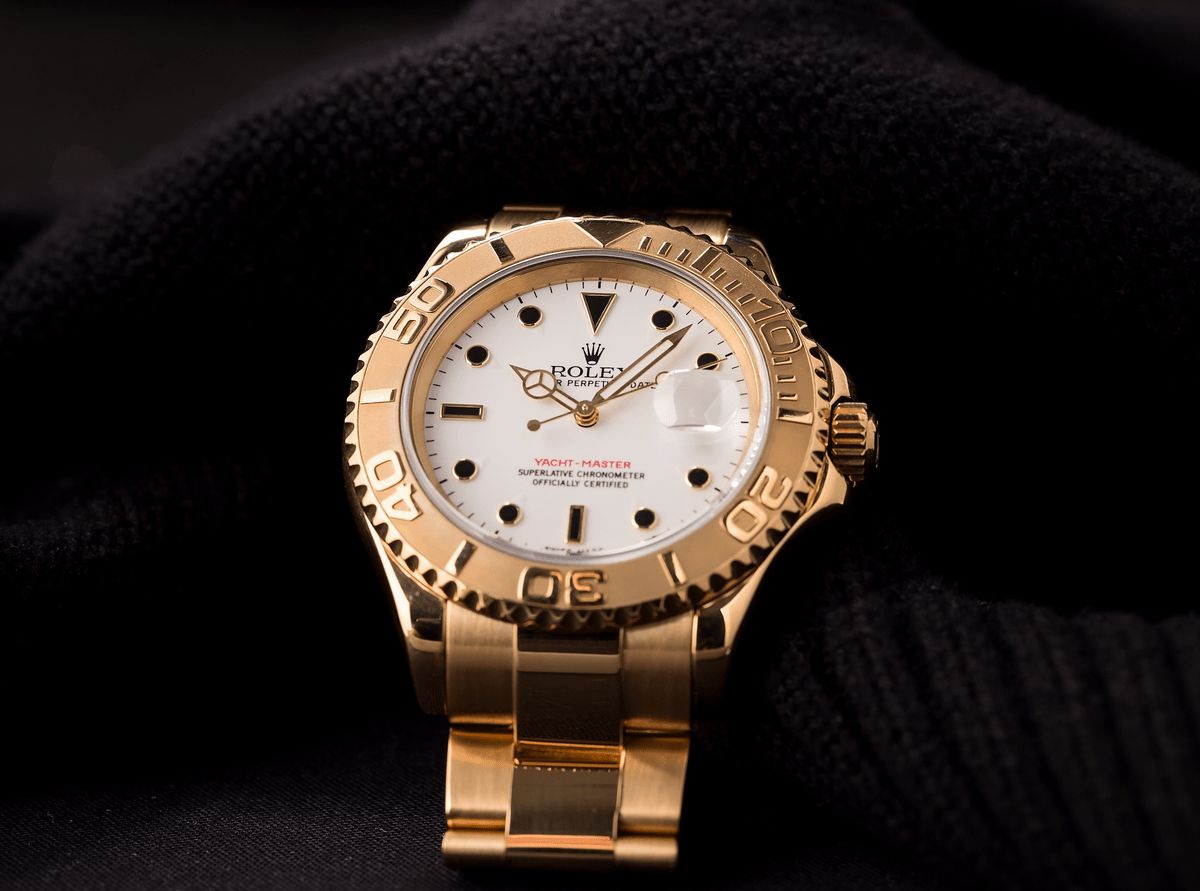
Notable Rolex Watches in the 1990s
– Rolex Yacht-Master ref. 16628 along with ref. 16622
– Rolex GMT-Master II ref. 16710
– Rolex Submariner ref. 14060 along with ref. 16610
– Rolex Datejust ref. 16233 along with ref. 16234
– Rolex Explorer ref. 14270
– Rolex Explorer II ref. 16570
– Rolex Sea-Dweller ref. 16600
Click here to our complete buying guide on Rolex Watches.
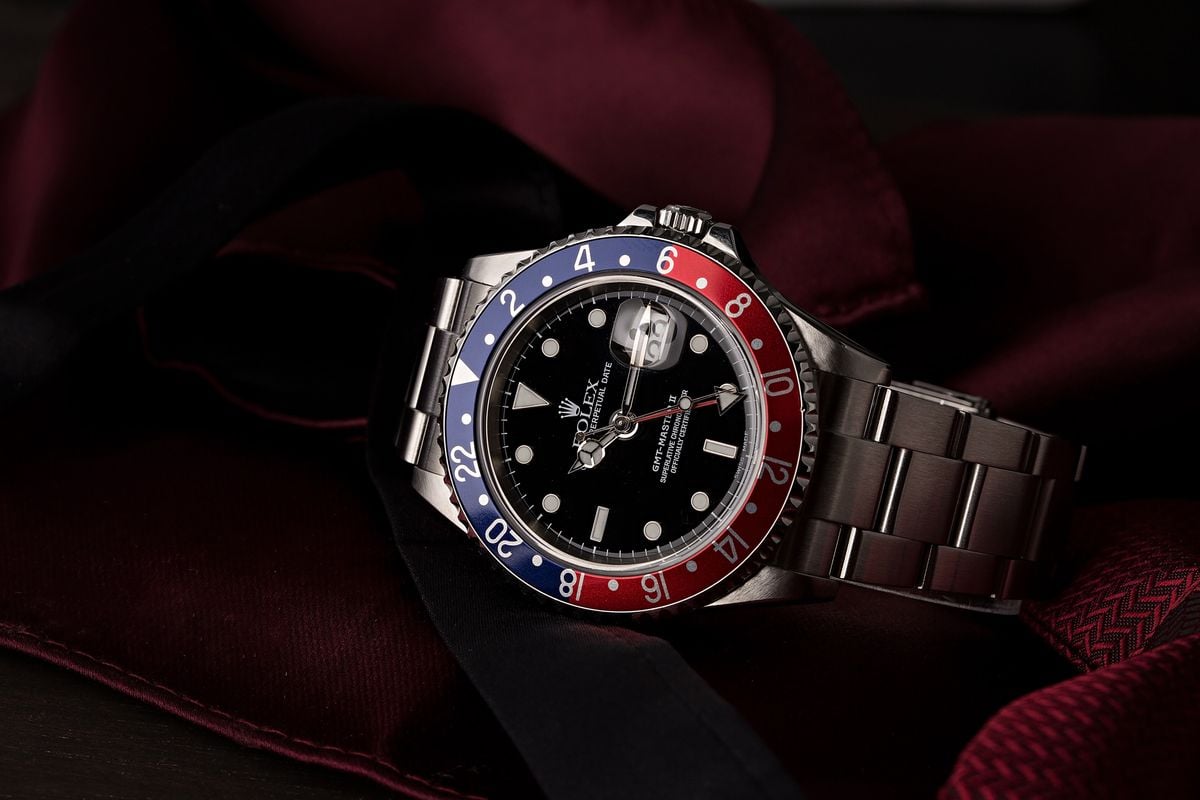
A Brief Rolex History: The Achievements that Shaped the 1990s
The Rolex catalog consists of several pillar models which have remained in production for years. The brand’s devotion to optimizing its technologies contributes greatly to its success, as each watch generated is predicted to last a lifetime. While expensive, Rolex watches are well worth the investment because you can expect to use the same watch for a long time.
The brand has been established in 1905 by Hans Wilsdorf. Rolex gained its reputation for highly accurate timepieces early , becoming the very first wristwatch to get the Swiss Certificate of Chronometric Precision in 1910.
Many world-firsts and several other successes followed, ultimately forming the Rolex as we know it today. In 1926, Rolex produced the Oyster case, producing the world’s first waterproof wristwatch. While it’s since been tirelessly perfected over the past century, even the Oyster case remains a fixture of the company’s catalog. A couple of decades later, in 1931, the Perpetual movement was introduced, earning Rolex the name of this first-ever self-winding movement using a Perpetual rotor. This mechanism remains a fixture of this Rolex portfolio, and collectively both of these innovations serve as the back of their modern Rolex catalog.
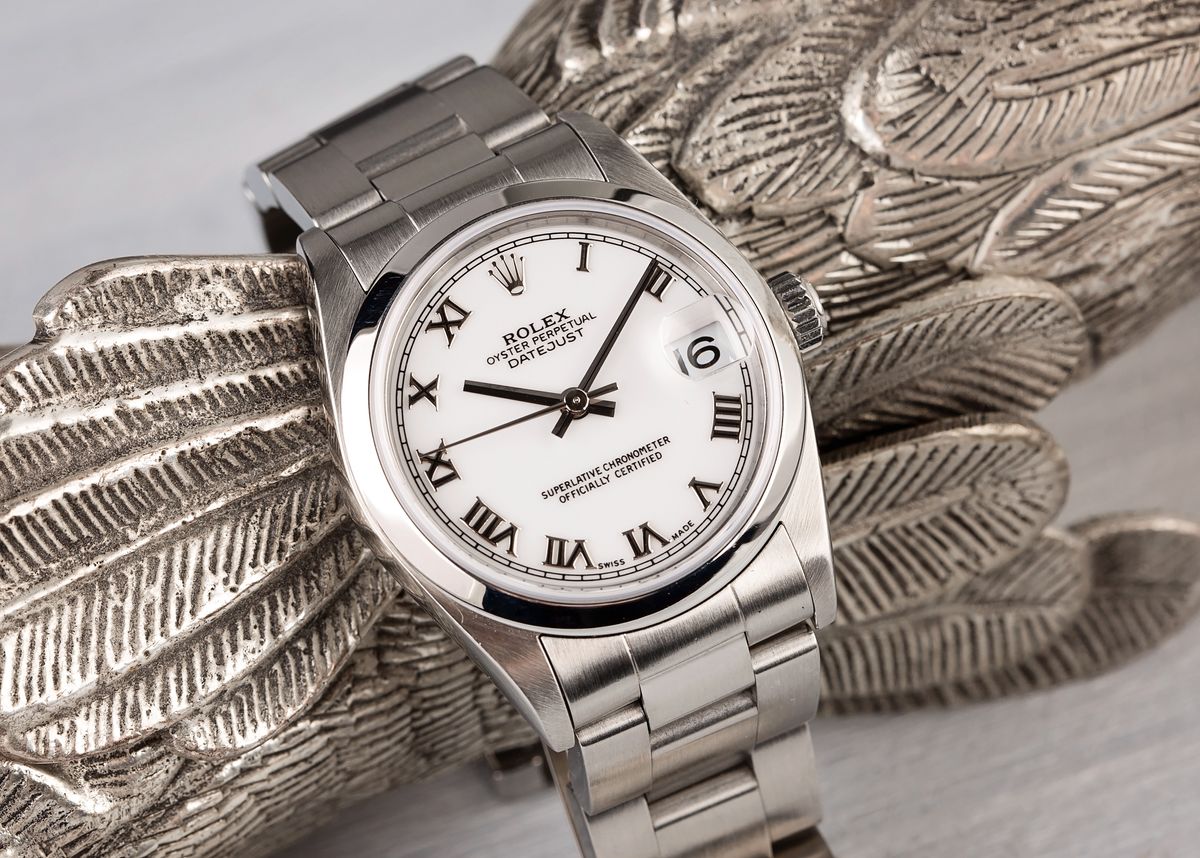
Progress and Innovation
1945 marked the introduction of this Datejust, which would go on to be one of the most well-known watches from the 1990s. This was the very first instance of an automatically changing date mechanism and used the Oyster situation and Perpetual movement. The next decade saw the launch of numerous heart versions, such as the Submariner, GMT-Master, Explorer, and Oyster Perpetual.
Cutting ahead of the 1970s and early 1980s, Rolex briefly shifted its attention to developing a Quartz movement worthy of this prestigious Rolex name. This era is often known as the Quartz Crisis since it found a sharp drop in mechanical watch sales in favor of more accurate and cheap watches powered by Quartz moves.
While Rolex remained dedicated to further developing its technologies, the brand wasn’t resistant to the effects the Quartz Crisis needed in the Swiss watchmaking industry, and also the Rolex Oysterquartz was established. A Quartz movement made entirely by Rolex powered the opinion, which also provided a modern and angular spin on the hugely popular Datejust. That brings us into the 1990s and some of the most well-known watches produced during this time.
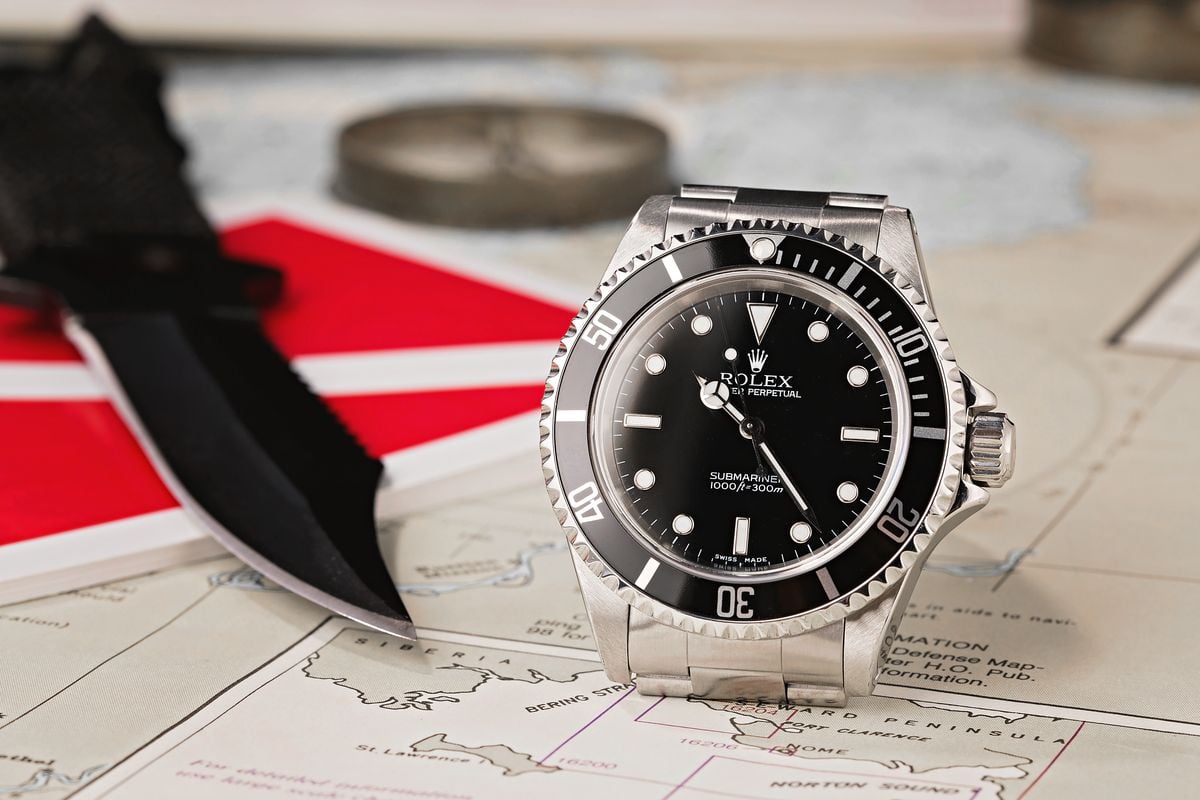
Popular Rolex Watches in the 1990s
By the 1990s, a lot of the dust out of the Quartz Crisis had settledand Rolex introduced its principal attention back towards refining its heart versions and purpose built application watches. Lots of the versions that first emerged at the end of the 1980s and early 1990s would go on to define a lot of the Rolex brand as we know it today.
Rolex Yacht-Master References 16628 & 16622
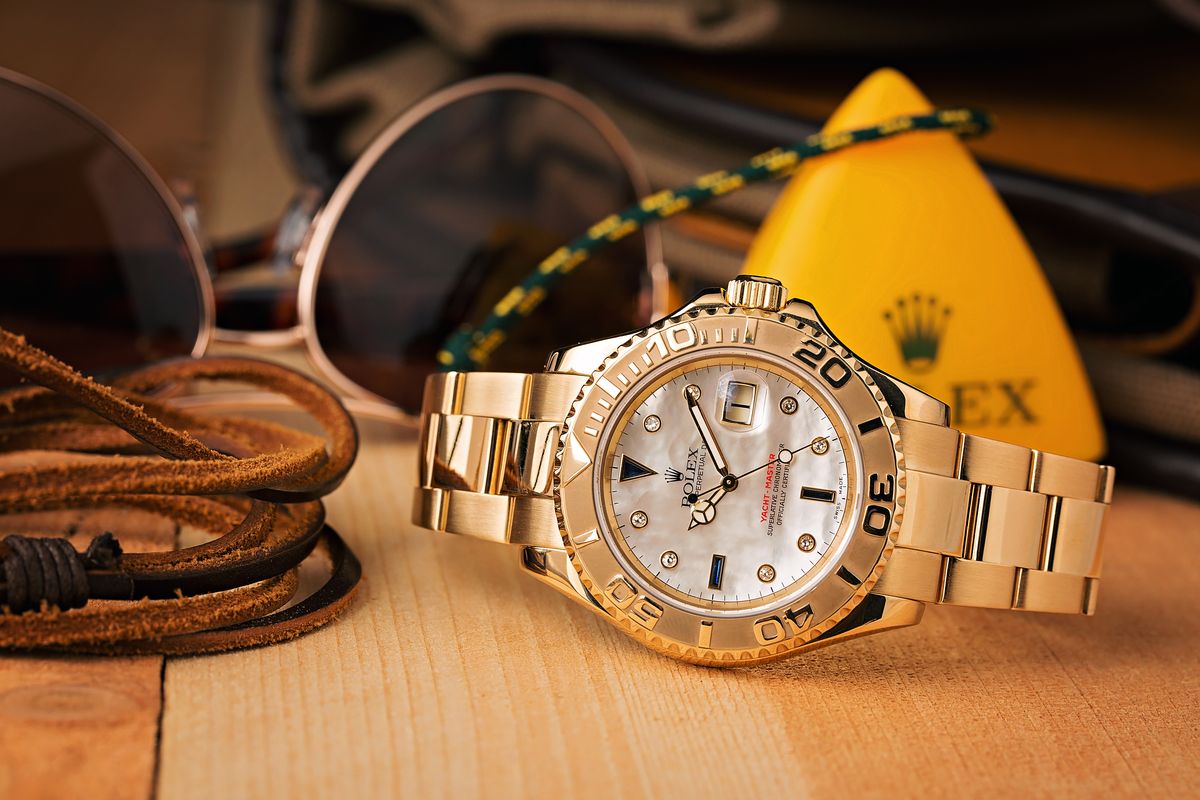
Case Size: 40mm
Materials: 18k Yellow Gold; Stainless Steel & Platinum
Dial: Multiple Selections available
Bezel: Bidirectional, Gold or Platinum with 60-minute timing scale
Crystal: Sapphire w/ Cyclops Cabinet lens
Movement: Cal. 3135
Bracelet: Oyster Bracelet
The launch of this Rolex Yacht-Master from 1992 was significant since it was one of the very first brand new versions from the company in years. If its design seems familiar, that’s as it’s intensely inspired by the Submariner diver’s watch with a 60-minute bezel, comparable Mercedes palms, and the same case dimensions. However, while the Submariner was designed for use below the sea, the Yacht-Master is a whole lot more suited to life on the decks of a yacht having a more extravagant design and a decrease thickness rating – the Submariner is water-resistant up to 300 meters while the Yacht-Master is watertight up to 100 meters.
Part of this Yacht-Master’s immense success during the 1990s lies in its styling. The lugs are slightly more rounded compared to the Submariner, and the bezel (frequently presented in precious metals) includes a sand-blasted complete with polished and raised graduations.
The version debuted in all-gold with the ref. 16628, followed soon by the mid-size and ladies editions a couple of decades afterwards, and then the platinum and steel Rolesium ref. 16622 in 1999. Many other editions also have been published, including those fitted with ceramic bezels. However, that both the all-gold and Rolesium variants stay the very representative of Rolex watches created during the 1990s.
Rolex GMT-Master II ref. 16710
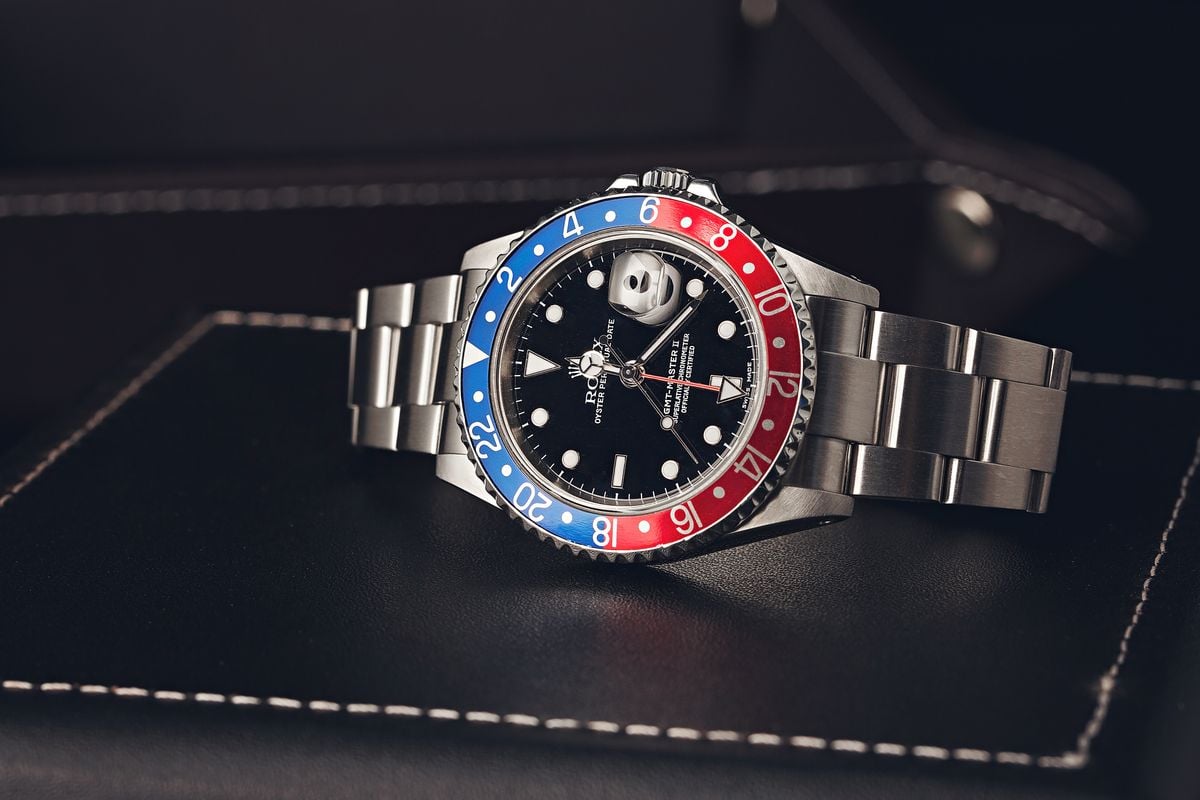
Case Size: 40mm
Materials: Stainless Steel
Dial: Black w/ White Gold markers
Bezel: Bidirectional, Aluminum fit with 24-hour scale
Crystal: Sapphire w/ Cyclops Cabinet lens
Movement: Cal. 3185
Bracelet: Oyster or Jubilee Bracelet
The mention 16710 premiered from the late 1980s and remained one of the very sought-after versions of this coveted pilot’s opinion during the 1990s and well into the mid-2000s until it was finally discontinued in favor of the 6-digit ref. 116710. While it wasn’t a entirely new version as the typical GMT-Master was in production since the mid 1950s, the GMT-Master II was still an extremely innovative addition to the Rolex catalog as it introduced a different 24-hour hand. Now the 24-hour hands is independent, the wearer can observe two time zones on the dial and a third about the bezel.
The very initial GMT-Master II ref. 16760 premiered several decades before the introduction of the ref. 16710 in 1983, and is often referred to by avid collectors because the “Fat Lady” following the situation ’s slightly heavier proportions. This was necessary to adapt the new movement using its independent 24-hour hand. The ref. 16710 debuted a more refined and slimmed-down design, refining the very first generation of this GMT-Master II.
During its almost 20-year production conduct, the ref. 16710 featured Tritium or even LumiNova (and then afterwards Super-LumiNova on its dialup, holes or no holes on the instance, three different bezel color choices. One of the very iconic is the “Pepsi” bezel using a red and blue insert, although the show was produced with a black and red “Coke” bezel and even an all-black choice.
Rolex Submariner 14060
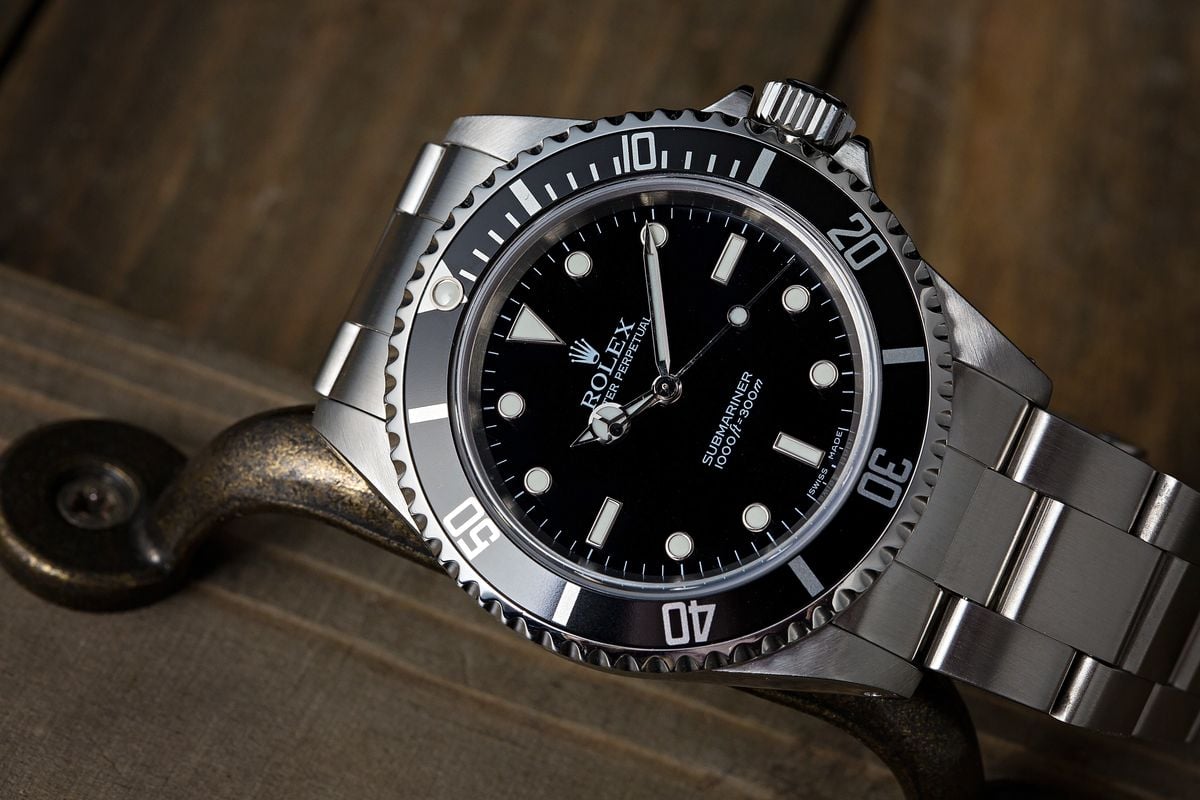
Case Size: 40mm
Materials: Stainless Steel
Dial: Black w/ White Gold markers
Bezel: Unidirectional, Aluminum fit with 60-minute time scale
Crystal: Sapphire
Movement: Cal. 3000
Bracelet: Oyster Bracelet
After the Submariner debuted in the 1950s, it didn’t have a date on the dialup. As a professional programmer ’s tool view, there wasn’t originally a need to get a date mechanism. However, as popularity for the dear James Bond Rolex soared, Rolex released a variation with all the date prominently exhibited at the 3-hour markers throughout the 1960s. Regardless of the prevalence of this date-displaying version, Rolex constantly continued to create a no-date varant, together with the ref. 14060 making an appearance in 1990.
The “No Date” Submariner, as many have come to know it, remained in production during the 1990s. It remains true to Rolex’s devotion to luxury with lumed plots in white gold encircles while also offering significant water-resistance up to 1,000 ft. As a modern Submariner, the ref. 14060 also got a unidirectional bezel for safer time while underwater, a high-beat Perpetual movement, along with a scratch-resistant sapphire crystal over the dial. At 40mm in diameter, it also keeps the normal dimensions and weight that many collectors want, as well as the ref. 14060 and the date-displaying ref. 16610 became incredibly popular versions for Rolex during the 1990s.
Rolex Datejust 16233
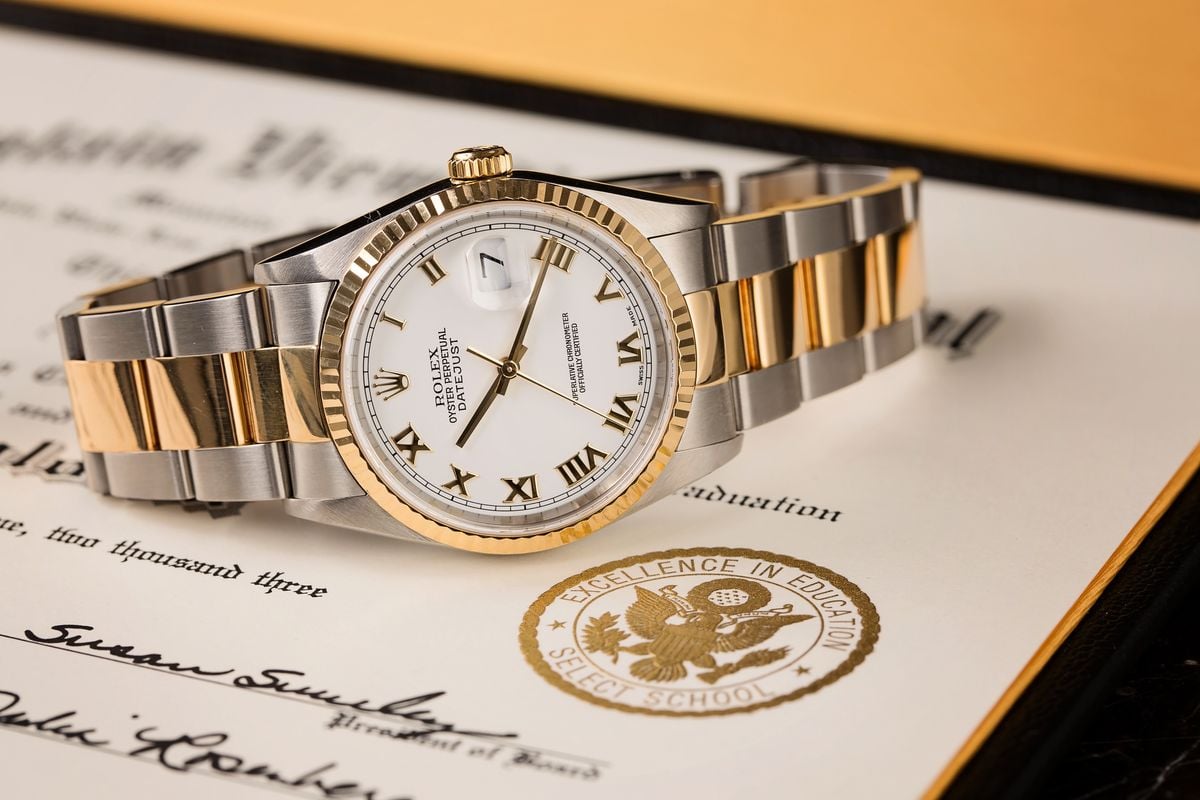
Case Size: 36mm
Materials: Stainless Steel & Yellow Gold
Dial: Multiple Selections available
Bezel: Fixed, 18k gold, Fluted style
Crystal: Sapphire w/ Cyclops Cabinet lens
Movement: Cal. 3135
Bracelet: Oyster or Jubilee Bracelet
No listing of popular 1990s Rolex watches would be complete without the Datejust 16233 in two-tone. Though it premiered from the late 1980s, the mention 16233 remained in production during the whole next decade. It exudes 90s design using a flawless pairing of stainless steel and yellow gold using the brand’s legendary fluted bezel.
The ref. 16233 replaced the Datejust 16013, bringing with it numerous upgrades. The acrylic crystal was swapped out to sapphire, and the movement was upgraded from the Caliber 3035 into the Caliber 3135 using a 48-hour power book and a transverse balance bridge. However, the case dimensions and bracelet choices stay the same, together with the case measuring 36mm in diameter and then also paired with the 5-link Jubilee bracelet or 3-link Oyster. When there are a lot of dial options available, champagne remains the most iconic and prevalent.
On the wrist, then the ref. 16233 is undeniably a 90s Rolex. Whereas the modern Datejust feels heftier with completely good bracelet connections, the ref. 16233 features hollow end-links and center connections. This design element allows the Datejust to maintain a slightly cheaper price point and gives it the classic sense of the watches in the 1980s and 1990s.
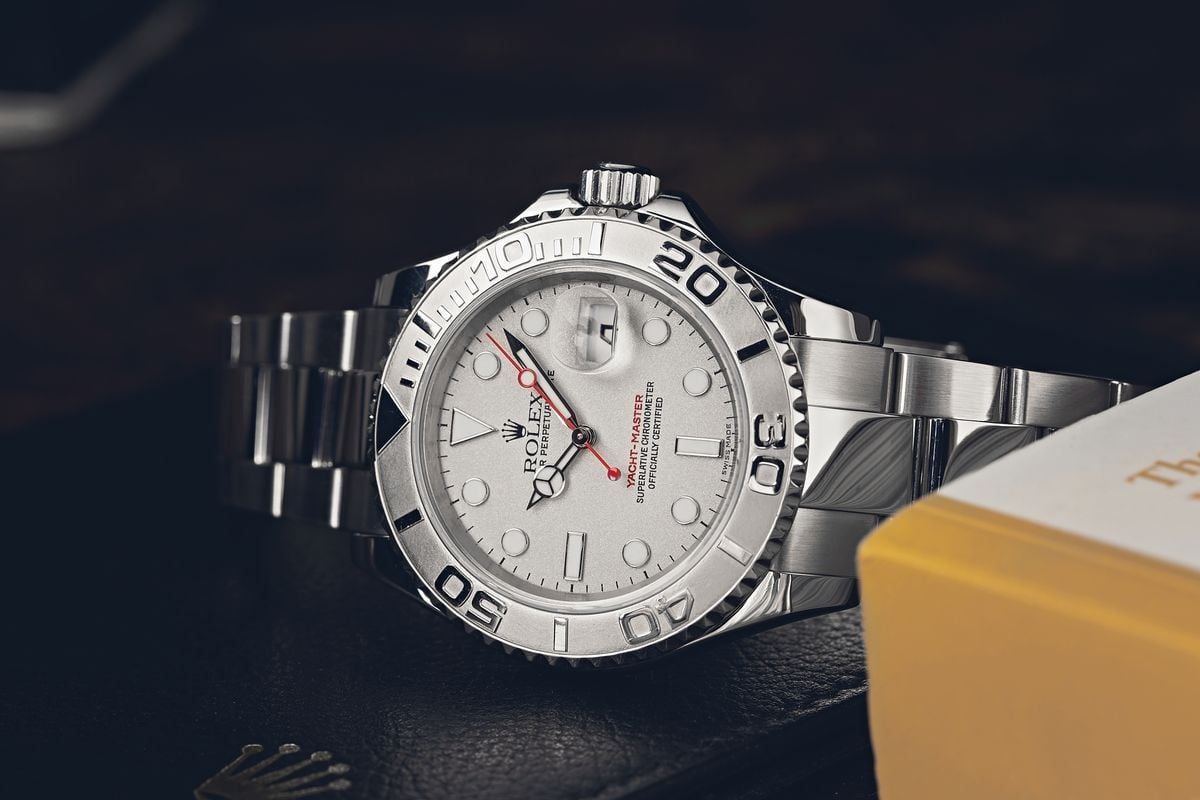
The Value of 1990s Rolex Watches
Among all Rolex watches both vintage and modern, it is frequently those in the 1990s which are the most inexpensive. Old enough to give a savings compared to the current-production versions, but not old enough yet to be accompanied from the steep price premiums which frequently accompany Rolex models in the 1960s or 1970s, the several models in the 1990s offer enormous value for the cost.
Offering a refined aesthetic that’s your definition of “timeless Rolex” – long prior to the arrival of Super Cases and porcelain bezels – the Rolex watches in the 1990s represent a defining time in the manufacturers history. Lots of the Rolex versions in the 1990s hold their worth incredibly well just because they boast the 5-point coronet in their dial. Additionally, exactly enjoy all Rolex watches, if properly preserved, they can outlive their owners and be cherished heirlooms for additional generations to enjoy.
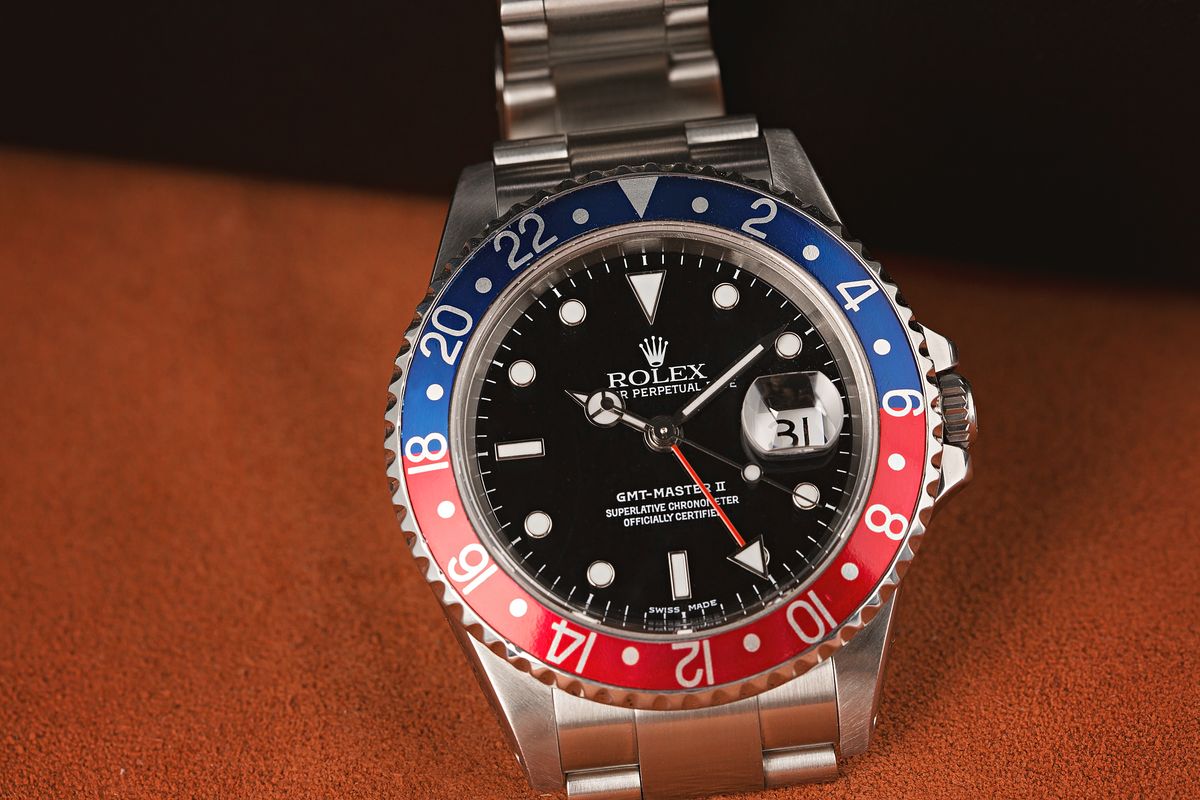
The article 1990s Rolex Watches Ultimate Buying Guide appeared first on Bob's Watches.
Article Source and Credit bobswatches.com //www.bobswatches.com/rolex-blog/buying-guides/rolex-1990s-watches.html Buy Tickets for every event – Sports, Concerts, Festivals and more buytickets.com